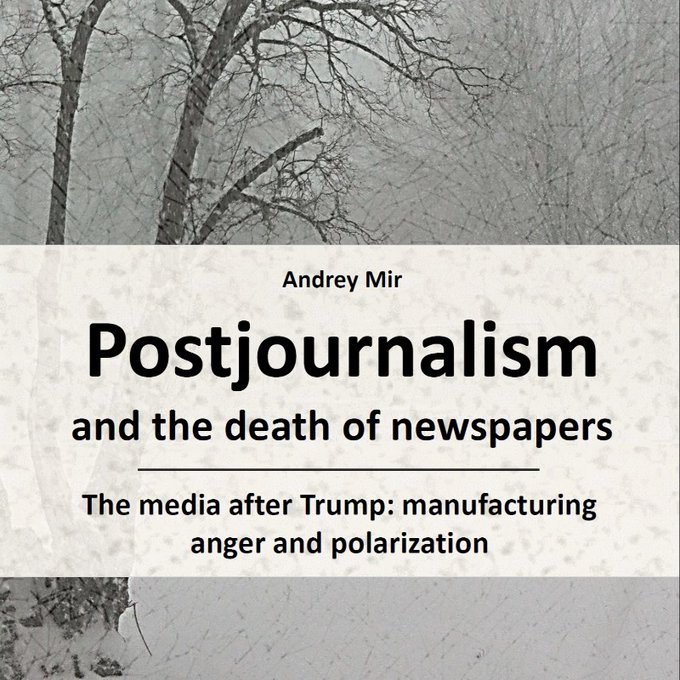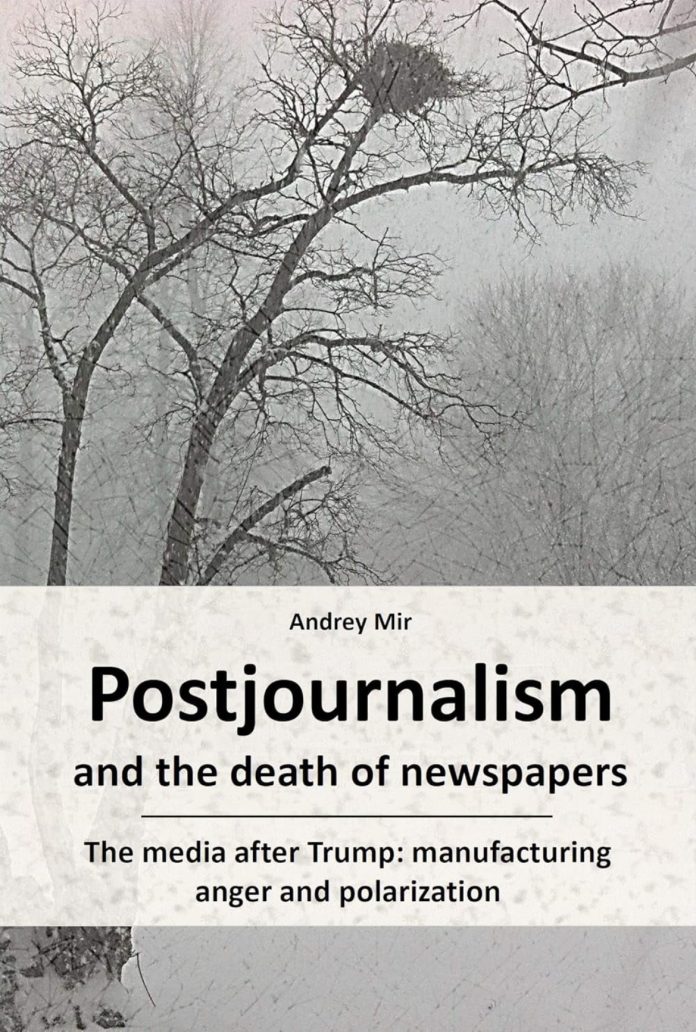In the digital age, the evolution of journalism has taken a transformative turn, marked by the emergence of postjournalism. This phenomenon prioritises sensationalism, outrage, and polarisation over traditional journalistic values like objectivity and integrity. In this article, we delve deeper into the mechanisms of postjournalism, exploring how it manufactures anger and serves polarisation, and its implications for society.
The Mechanics of Manufactured Anger:
- Sensationalism and Clickbait: Postjournalistic outlets often employ sensational headlines and clickbait tactics to grab attention. They exploit emotional triggers, amplifying conflict and controversy to provoke outrage.
- Framing and Selective Reporting: Stories are framed in a way that elicits emotional responses, emphasising conflict and divisiveness while downplaying nuance or context. Selective reporting reinforces preexisting beliefs and fosters anger within echo chambers.
- Amplification of Extreme Voices: Postjournalistic platforms give disproportionate visibility to extreme viewpoints, magnifying outrage and polarising discourse. This amplification reinforces tribalism and exacerbates societal divisions.
The Role of Social Media:
- Algorithmic Bias: Social media algorithms prioritise content that elicits strong emotional reactions, regardless of its veracity or reliability. This bias fuels the spread of sensationalism and outrage, contributing to the proliferation of postjournalism.
- Echo Chambers and Filter Bubbles: Social media platforms facilitate the formation of echo chambers, where users are exposed only to content that aligns with their existing beliefs. This reinforcement of ideological bubbles deepens polarisation and impedes constructive dialogue.
- Virality and Misinformation: Postjournalistic content, designed for maximum virality, often sacrifices accuracy for sensationalism. Misinformation spreads rapidly through social networks, exacerbating societal tensions and eroding trust in reliable sources.
Implications of Manufactured Anger:
- Polarisation and Tribalism: Manufactured anger reinforces tribal identities and deepens societal polarisation. Individuals retreat into ideological echo chambers, demonising opponents and rejecting opposing viewpoints.
- Erosion of Trust: Postjournalism erodes trust in traditional media institutions, as sensationalism and bias undermine credibility. This erosion of trust undermines the role of the media as a watchdog and gatekeeper of democracy.
- Threats to Democracy: A polarised society is less conducive to reasoned debate and compromise, posing a threat to democratic norms and institutions. Postjournalism undermines the foundations of democracy by fostering division and distrust.
Addressing the Challenges:
- Reinforcing Ethical Journalism: Media organisations must reaffirm their commitment to ethical journalism, prioritising accuracy, transparency, and fairness. Journalists should resist the lure of sensationalism and uphold rigorous standards of reporting.
- Promoting Media Literacy: Education in media literacy is essential to equipping individuals with the skills to critically evaluate information and discern between reliable sources and misinformation. Media literacy empowers citizens to navigate the digital landscape responsibly and resist the influence of postjournalism.
- Regulation and Accountability: Policymakers should explore regulatory measures to combat the spread of misinformation and ensure accountability in the media industry. Transparency requirements and standards for online platforms can help mitigate the harmful effects of postjournalism.
Postjournalism represents a significant departure from the principles of ethical journalism, prioritising sensationalism and polarisation over truth and integrity. By manufacturing anger and serving polarisation, postjournalistic outlets undermine the foundations of democracy and contribute to societal discord. Addressing the challenges posed by postjournalism requires a multifaceted approach, encompassing ethical journalism, media literacy education, and regulatory measures. Only by upholding the values of responsible journalism and promoting media literacy can we mitigate the corrosive effects of postjournalism and safeguard democratic discourse.

“Postjournalism and the Death of Newspapers” is an in-depth analysis that scrutinises the profound shifts in journalism catalysed by the advent of postjournalism, particularly its role in contributing to the decline of traditional newspapers. It delves into the multifaceted dimensions of postjournalism, examining its mechanisms, impact, and broader societal implications.
The text begins by contextualising the rise of postjournalism within the broader landscape of contemporary journalism. It highlights the transformation of traditional journalistic norms, characterised by principles such as objectivity, fact-checking, and balanced reporting, into a new paradigm driven by clicks, shares, and engagement metrics.
A central focus of the analysis is the exploration of how postjournalism prioritises sensationalism, outrage, and polarisation over journalistic integrity. It elucidates the methods employed by postjournalistic outlets to manufacture anger, including the use of sensational headlines, selective reporting, and the amplification of extreme viewpoints. These tactics are designed to provoke emotional responses and elicit outrage, thereby maximizing audience engagement and driving traffic to digital platforms.
Moreover, the text elucidates the symbiotic relationship between postjournalism and social media platforms. It underscores how algorithms designed to maximise user engagement often prioritise emotionally charged content, irrespective of its veracity or reliability. This algorithmic bias contributes to the proliferation of sensationalism, misinformation, and echo chambers, exacerbating societal divisions and eroding trust in traditional media sources.
The implications of manufactured anger are explored in depth, particularly its role in deepening polarisation, eroding trust in media institutions, and posing threats to democratic discourse. The text underscores how postjournalism fosters a climate of tribalism, where individuals retreat into ideological echo chambers, demonising opponents and rejecting opposing viewpoints. This polarisation undermines the foundations of democracy by impeding reasoned debate, compromising compromise, and fostering distrust in democratic institutions.
In response to these challenges, the text proposes a multifaceted approach to address the detrimental effects of postjournalism. It advocates for reinforcing ethical journalism standards, promoting media literacy education, and exploring regulatory measures to mitigate the spread of misinformation and ensure accountability in the media industry.
Conflict is being socially constructed to divide us and appeal to some of our most unattractive tendencies. Only we can change this by engaging with content that is well researched and enlightening.
Reviews:
“Postjournalism and the Death of Newspapers may be the most profound analysis of the subject since the last time Marshall McLuhan wrote about it. Mir describes a universe in which the news now chases the reader rather than the other way around. Everything is told in a wonderful epigrammatic style – you will be digging up quotes from it for years.”– Martin Gurri, author of “The Revolt of the Public”.
“The most important book in media theory that has been written in 40 years.”– Paul Levinson, author of “Digital McLuhan”.
“Andrey Mir’s Postjournalism offers a powerful, sweeping narrative of how news media have evolved over the centuries.” – Arnold Kling, economist, author of “Crisis of Abundance” and “Invisible Wealth”.
“In his book Postjournalism and the Death of Newspapers, Mir is here partly to praise newspapers, partly to bury them, but mostly to explain why their death is (a) inevitable and (b) a very big deal. He communicates this with a history of news media and a blizzard of concepts and neologisms.”– Danyl Mclauchlan, “The Spinoff,” New Zealand.
“As Mir argues, this change in the economic structure of the news media has quietly transformed journalism from a theoretically neutral means of “manufacturing consent” into a political cause that people are rallied into supporting, usually by inciting them to some form of outrage.”– Murtaza Hussain, “The Intercept”.
…This book introduced the notion of “postjournalism” into contemporary media criticism.
“Postjournalism and the death of newspapers” unveils the economic and cultural mechanisms of agenda-setting in the news media at the final stage of their historical existence. As advertising money has fled to the internet, the news media have been forced to switch to another source of funding – seeking readers’ support. However, they cannot sell news because news is already known to people from social media newsfeeds. However, when the news is triggering, people still want somebody authoritative to validate this news’ significance within certain value systems. The media got the prompt and switched from news supply to news validation.
Since only triggering news requires validation, the media are incentivized to select and supply this news. They inevitably transition to value-based coverage, declining the standards of journalism established in the 20th century, when the media were generously funded by advertising.
The need to pursue reader revenue, with the news no longer being a commodity, is pushing journalism to mutate into postjournalism. Media outlets are increasingly soliciting subscriptions as donations to a cause. Journalism wanted its picture to match the world; postjournalism wants the world to match its picture.
The ad-driven media manufactured consent. The reader-driven media manufacture anger. The former served consumerism. The latter serve polarization. The book explores polarization as a media effect.
Andrey Mir (Andrey Miroshnichenko) is a media expert and journalist with twenty years in the print media.
Other books by Andrey Mir:
- Human as Media. The Emancipation of Authorship. (2014).
- Digital Future in the Rearview Mirror: Jaspers’ Axial Age and Logan’s Alphabet Effect. (2024).
If you like our content, join us in helping to bring reality and decency back by SUBSCRIBING to our Youtube channel: https://www.youtube.com/channel/UCQ1Ll1ylCg8U19AhNl-NoTg AND SUPPORTING US where you can: Award Winning Independent Citizen Media Needs Your Help. PLEASE SUPPORT US FOR JUST £2 A MONTH https://dorseteye.com/donate/







